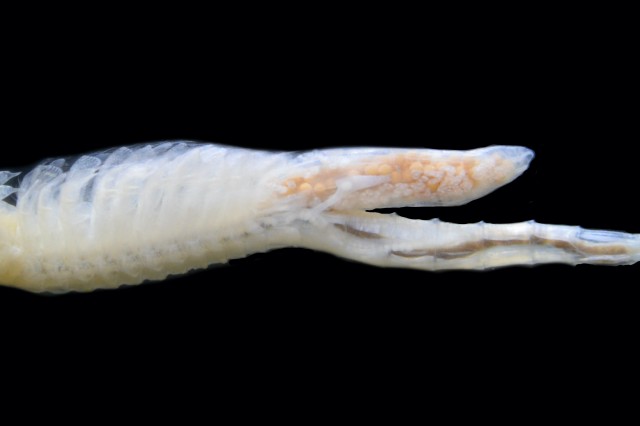What are those blue blobs on the beach?
Marine Sailors Come to Shore
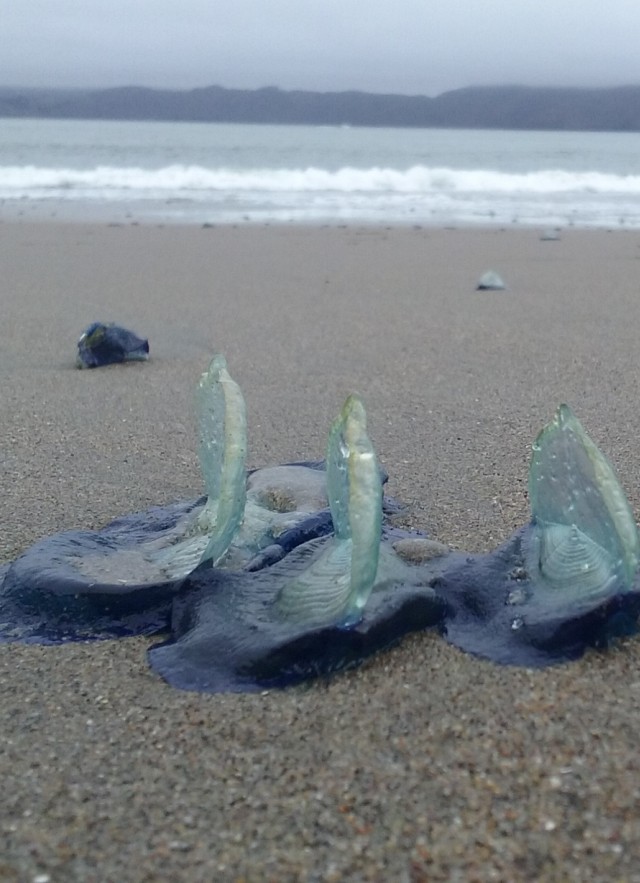
image by iNaturalist user rockybajada
Between super blooms of wildflowers and super blooms of fungus, Earth Month has been big for bountiful numbers of L.A. wildlife. Now Angelenos have another fascinating bloom to add—thousands of blue (jellyfish) blobs on the shores of our local beaches.
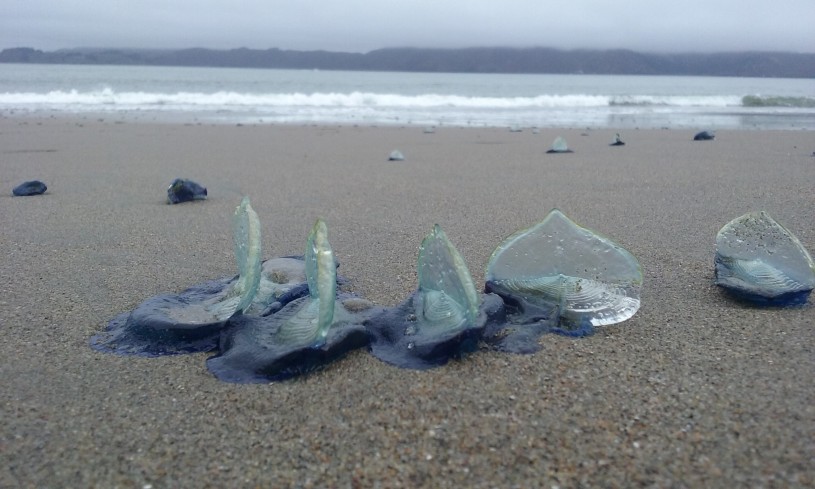
image by iNaturalist user rockybajada
If you’ve stumbled across gobs of these blobs during a long walk on the beach, you might have some questions. We did too, so we checked in with our marine researchers and got some answers. Here’s what Dr. William Ludt, NHM’s the Assistant Curator of Ichthyology, had to say about these mysterious visitors.
What are these?
What might look like a blue and clear blob washing up on shore lately is actually the species Velella velella. This species' name comes from the Latin word vēlum, meaning sail—a direct link to the common name for this species, the “by-the-wind sailor” and to the blueish clear sail on the top of the organism.
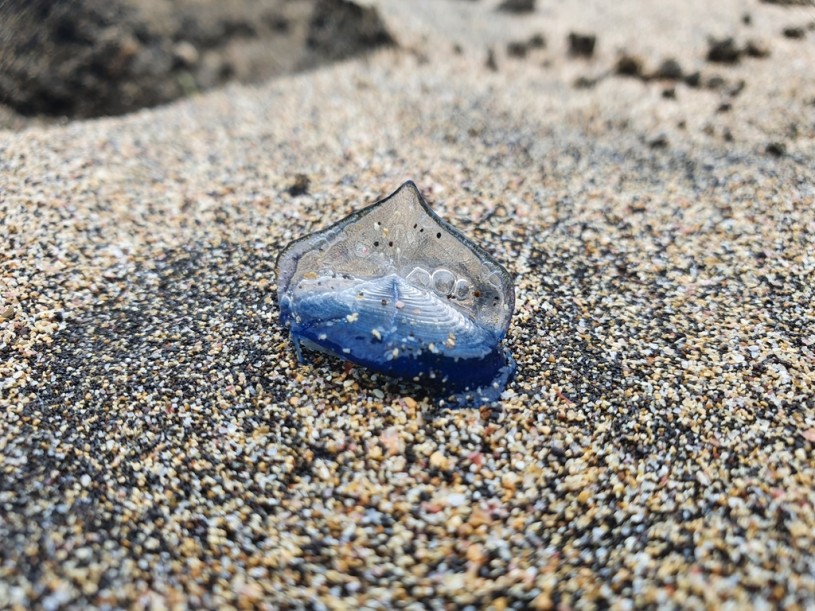
image by iNaturalist user Couve
These are marine hydrozoans, a group of animals closely related to jellyfishes. Interestingly, what might look like a single animal is actually a colony of multiple individuals working together. This is similar to the Portuguese man o' war, which is also a colonial hydrozoan. By-the-wind sailors feed on planktonic organisms using tentacles that have harpoon-firing cells called cnidocysts, just like jellyfish.
Why are they here?
By-the-wind sailors is an apt name for this species because they move at the mercy of the wind and don't actively swim from place to place. This means that when the prevailing winds blow in the right direction for long enough, you can see large aggregations of these animals washing up on shore or crowding local waterways. They're here off our coast right now simply because the wind took them here.
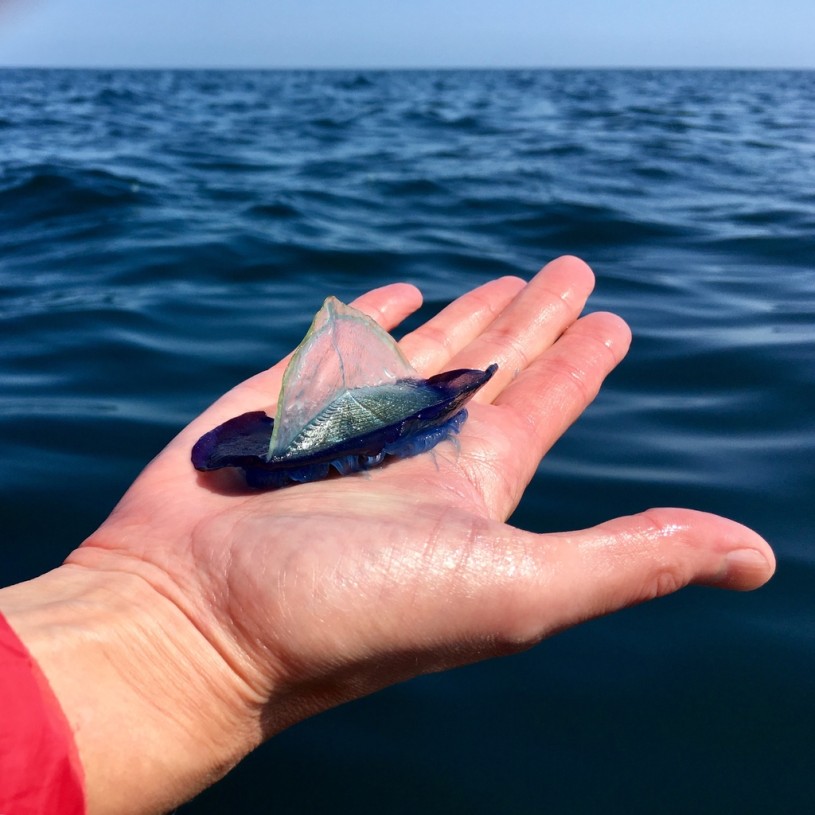
image by iNaturalist user Amanda Whitmire
How rare are they?
While they might not show up every single year, they aren't uncommon to find along the west coast of the US.
What should you do if you come across one?
By-the-wind sailors feed on tiny planktonic organisms using tentacles that have stinging cells just like jellyfish. The sting of a by-the-wind sailor is considered mild to humans. However, everyone reacts differently, and even though you might not have a strong reaction to them, the best advice is to leave them where they are if you come across them.
Should you take it home as a pet?
They might look cool, but these would likely not make good pets in aquaria.
Unfortunately, by the time they land on the beach, they have been through a lot and are unlikely to survive long.
If you find yourself surrounded by these beautiful blue blobs while catching a sunset, be sure to snap some photos for iNaturalist! Every observation helps researchers like Dr. Regina Wetzer, Curator and Director of NHM’s Marine Biodiversity Center, learn more about life on our planet.
Want to photograph more local L.A. wildlife? We’ve got you covered. City Nature Challenge is just around the corner, kicking off April 28. Learn more below!

